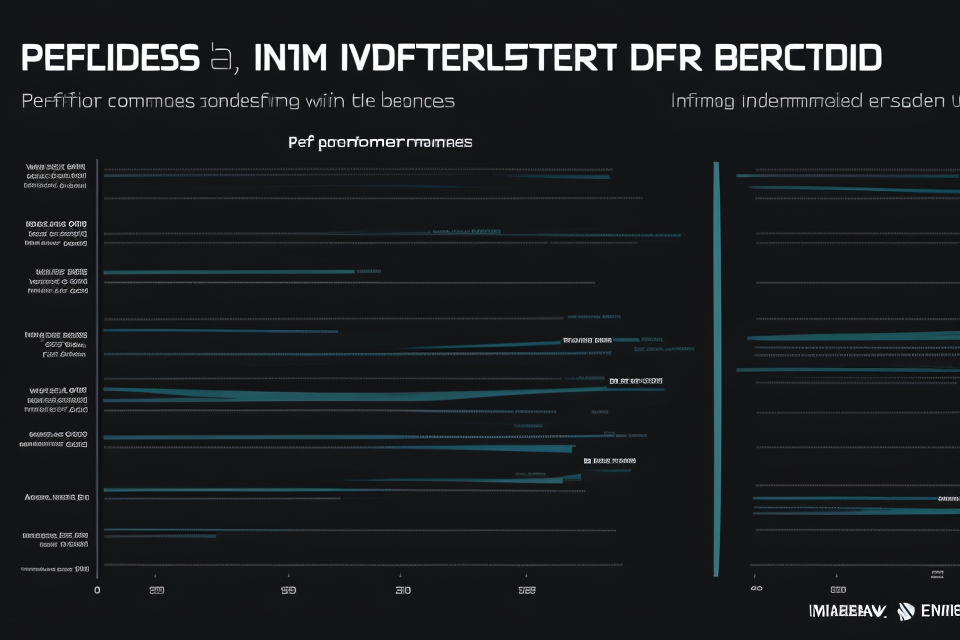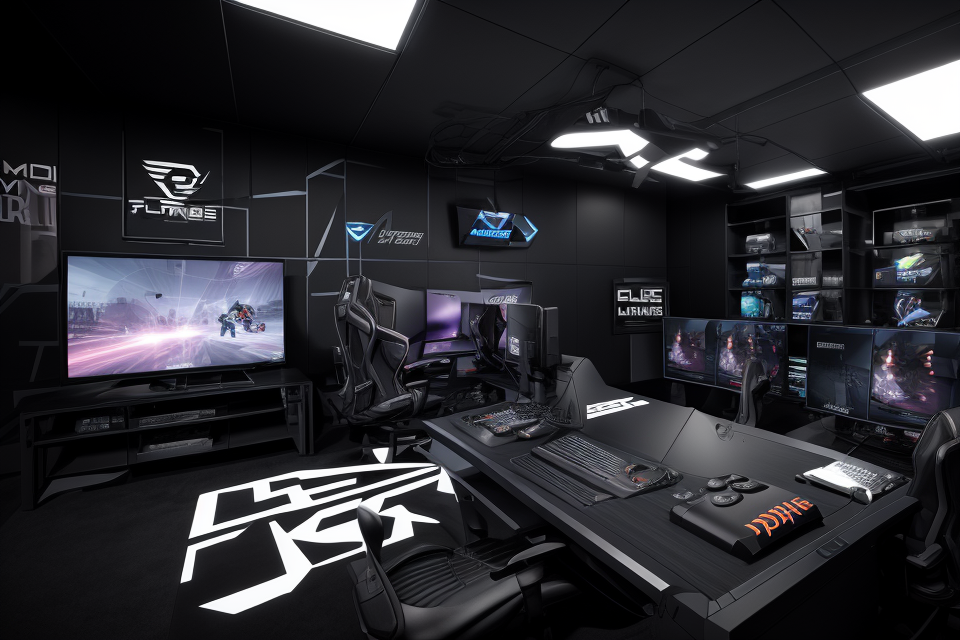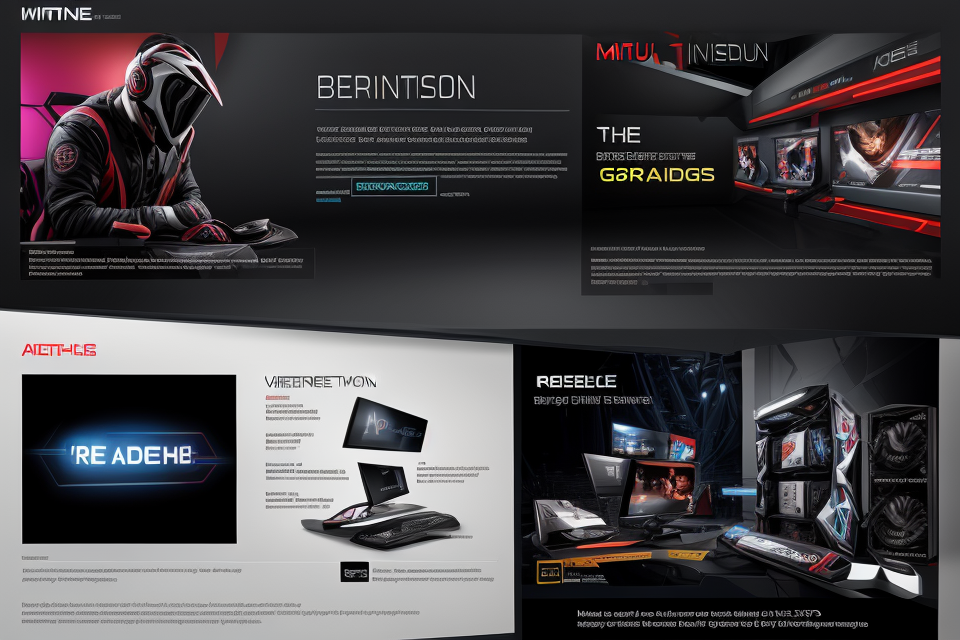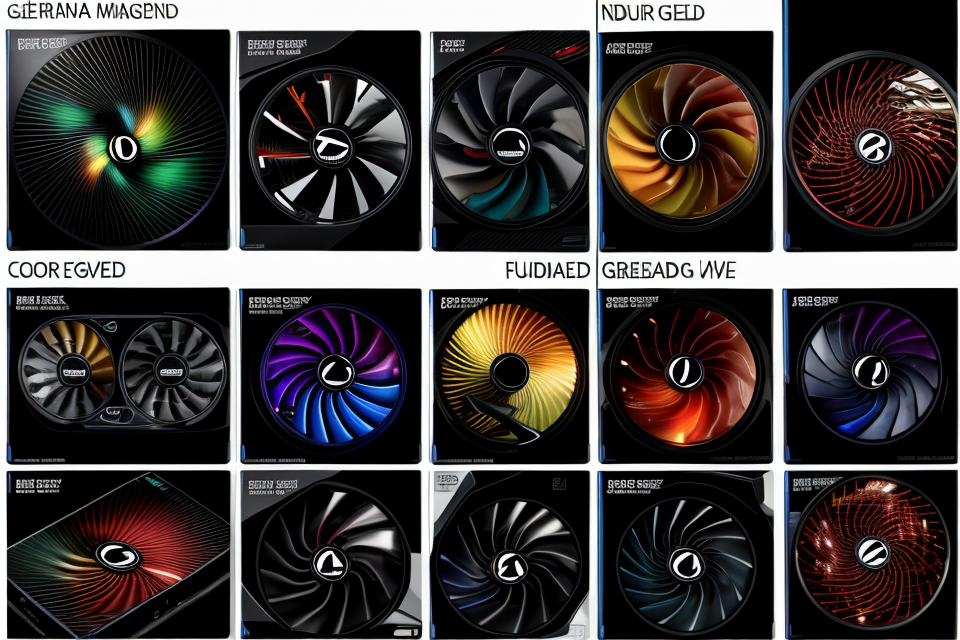
The world of technology is always evolving and advancing, with new and improved components being released on a regular basis. When it comes to enhancing visual fidelity in a computer system, there are two main components that come to mind: the processor and the graphics card. But which one is more important? Is it better to have a faster processor or a better graphics card? In this article, we will explore the pros and cons of each component and help you decide which one is more important for your specific needs. So, buckle up and get ready to find out the answer to this age-old question.
When it comes to enhancing visual fidelity in gaming or other graphics-intensive applications, both a faster processor and a better graphics card are important. However, the relative importance of each component depends on the specific use case.
In general, a faster processor is more important for tasks that require a lot of CPU power, such as game physics simulations or video encoding. A faster processor can help ensure that these tasks are completed quickly and efficiently, which can improve overall performance and visual fidelity.
On the other hand, a better graphics card is more important for tasks that are primarily dependent on the GPU, such as rendering complex 3D graphics or playing games with high-resolution textures. A better graphics card can help ensure that these tasks are completed with high levels of detail and smooth frame rates, which can also improve visual fidelity.
In conclusion, both a faster processor and a better graphics card are important for enhancing visual fidelity, but the relative importance of each component will depend on the specific use case.
Understanding Visual Fidelity
The Role of Processors in Enhancing Visual Fidelity
The processor, also known as the central processing unit (CPU), plays a crucial role in enhancing visual fidelity in a computer system. Visual fidelity refers to the quality of the images or graphics displayed on the screen, and it is determined by several factors, including the resolution, color depth, and frame rate. The processor is responsible for processing and rendering these images, and its speed and performance have a direct impact on the visual fidelity of the system.
Processor speed and visual fidelity
The speed of the processor is an important factor in determining the visual fidelity of a computer system. A faster processor can handle more complex calculations and processes, which translates to smoother and more realistic graphics. This is because the processor is responsible for rendering the images and animations, and a faster processor can handle more demanding tasks without causing any lag or slowdowns.
Examples of visual fidelity improvements with faster processors
There are several examples of how a faster processor can improve visual fidelity in a computer system. For instance, in video games, a faster processor can handle more complex graphics and animations, resulting in smoother gameplay and more realistic visuals. This is particularly important in fast-paced games that require quick reflexes and precision movements.
Another example is in graphic design and video editing, where a faster processor can handle large files and complex operations, resulting in faster rendering times and higher-quality output. This is particularly important for professionals who work with large files and need to meet tight deadlines.
In conclusion, the processor plays a crucial role in enhancing visual fidelity in a computer system. A faster processor can handle more complex calculations and processes, resulting in smoother and more realistic graphics. This is particularly important in demanding applications such as video games and graphic design, where faster processing speeds can make a significant difference in the quality of the output.
The Role of Graphics Cards in Enhancing Visual Fidelity
When it comes to enhancing visual fidelity, the role of graphics cards cannot be overstated. A graphics card, also known as a display card or graphics adapter, is a hardware component that is responsible for rendering images and video on a computer screen. It is an essential component of a computer system, particularly for tasks that require intensive graphics processing, such as gaming, video editing, and 3D modeling.
Graphics card performance and visual fidelity are closely related. The performance of a graphics card determines how quickly and efficiently it can process graphics data, which directly affects the quality of the images and video that are displayed on the screen. A high-performance graphics card can render images and video with greater detail, accuracy, and smoothness, resulting in a more visually stunning and immersive experience.
Examples of visual fidelity improvements with better graphics cards are numerous. For instance, a high-performance graphics card can render complex 3D models with greater precision and detail, resulting in more realistic and lifelike graphics. It can also handle large amounts of data more efficiently, enabling smoother and more seamless animation and special effects. Additionally, a better graphics card can support higher resolutions and frame rates, resulting in sharper and more detailed images and video.
In conclusion, the role of graphics cards in enhancing visual fidelity cannot be overstated. A high-performance graphics card is essential for tasks that require intensive graphics processing, and it can significantly improve the quality and realism of images and video.
Factors Affecting Visual Fidelity
Influence of Processor and Graphics Card Combination
The impact of a balanced system
In order to enhance visual fidelity, it is crucial to have a balanced system. A balanced system refers to a configuration where both the processor and graphics card are equally powerful and work in harmony to produce high-quality visuals.
When a system is balanced, the processor and graphics card can work together to handle complex graphics and animations, resulting in smooth and seamless visuals. This balance ensures that neither the processor nor the graphics card becomes a bottleneck, allowing both to work at optimal levels.
A balanced system is particularly important for applications that require intensive graphics processing, such as gaming, video editing, and 3D modeling. In these applications, a balanced system can provide a significant boost in performance and enhance visual fidelity.
How different combinations affect visual fidelity
The combination of a processor and graphics card can significantly impact visual fidelity. When selecting a processor and graphics card, it is important to consider how they will work together to produce high-quality visuals.
For example, a high-end graphics card may not provide any benefits if it is paired with a low-end processor. In this case, the processor may become a bottleneck, limiting the performance of the graphics card and resulting in lower visual fidelity.
On the other hand, a high-end processor may not provide any benefits if it is paired with a low-end graphics card. In this case, the graphics card may become a bottleneck, limiting the performance of the processor and resulting in lower visual fidelity.
Therefore, it is important to select a processor and graphics card that are compatible and work together to provide optimal performance and visual fidelity. This can result in a system that is capable of handling even the most demanding graphics processing tasks.
Other Important Factors
- RAM and storage considerations:
- Random Access Memory (RAM) is a crucial component that affects the overall performance of a computer system. It plays a significant role in determining the speed at which a computer can process data. When it comes to enhancing visual fidelity, having enough RAM is essential for smooth operation, particularly when working with large files or multitasking.
- Storage considerations are also important. The type and capacity of storage used in a computer can affect the speed at which data is accessed. For example, a solid-state drive (SSD) can provide faster read and write speeds compared to a traditional hard disk drive (HDD), which can help improve visual fidelity by reducing load times and enabling smoother video playback.
- Monitor resolution and refresh rate:
- The resolution of a monitor refers to the number of pixels it can display. A higher resolution means that more pixels can be packed into the same area, resulting in sharper and more detailed images. When it comes to enhancing visual fidelity, a higher resolution monitor can provide a more immersive experience, particularly for tasks such as gaming, video editing, and graphic design.
- The refresh rate of a monitor refers to the number of times per second that the image on the screen is refreshed. A higher refresh rate means that the image appears smoother and more fluid, particularly for fast-moving content such as video games or sports. When it comes to enhancing visual fidelity, a monitor with a higher refresh rate can provide a more responsive and seamless experience, particularly for tasks that require quick responses, such as gaming or graphic design.
Deciding Between a Faster Processor and a Better Graphics Card
Analyzing Your Needs
Identifying your primary use case
Before deciding whether to invest in a faster processor or a better graphics card, it is crucial to identify your primary use case. This means determining the specific tasks or activities that you will be using your computer for.
For example, if you are a gamer, you will likely prioritize a better graphics card to enhance the visual fidelity of your games. On the other hand, if you are a content creator, you may prioritize a faster processor to improve your workflow and productivity.
Understanding your budget
Another critical factor to consider when deciding between a faster processor and a better graphics card is your budget. These upgrades can be expensive, and it is essential to ensure that you can afford the one that will best meet your needs.
Before making a purchase, it is advisable to create a budget and prioritize your expenses. This will help you determine how much you can afford to spend on a faster processor or a better graphics card.
It is also essential to consider the long-term benefits of investing in either a faster processor or a better graphics card. While a more significant initial investment may be required, the improved performance and visual fidelity can result in a more enjoyable and efficient computing experience in the long run.
Balancing Cost and Performance
When deciding between a faster processor and a better graphics card, it is important to consider the balance between cost and performance. The performance of a computer system is determined by the combined efforts of the processor and graphics card. Therefore, both components are essential for enhancing visual fidelity.
However, the cost of a faster processor and a better graphics card can vary significantly. A faster processor may be more expensive initially, but it may also provide long-term benefits in terms of performance. On the other hand, a better graphics card may have a higher upfront cost but may offer immediate improvements in visual fidelity.
It is essential to identify the point of diminishing returns when balancing cost and performance. This means that there may be a point where adding more processing power or graphics capabilities may not significantly improve visual fidelity, but may increase the cost disproportionately.
Therefore, it is important to carefully assess the value of a faster processor versus a better graphics card based on the specific needs and budget of the user. It is also important to consider the long-term benefits of each component and how they will impact the overall performance of the computer system.
Future-Proofing Your Investment
When it comes to enhancing visual fidelity, deciding between a faster processor and a better graphics card can be a tough choice. However, it’s important to consider the long-term impact of your investment. Future-proofing your investment is crucial to ensure that your system can handle the demands of future games and applications.
The Importance of Scalability
Scalability refers to the ability of a system to handle increasing amounts of workload. When it comes to gaming and visual fidelity, scalability is essential to ensure that your system can handle the demands of new games and applications as they are released.
A processor with a higher clock speed and more cores is generally more scalable than a graphics card with a higher memory capacity. This is because the processor is responsible for handling a wide range of tasks, including game logic, physics simulations, and artificial intelligence, while the graphics card is primarily responsible for rendering graphics.
How to Plan for Future Upgrades
When it comes to future upgrades, it’s important to consider the longevity of your investment. A graphics card with a high memory capacity may be sufficient for the next few years, but it may not be enough to handle the demands of future games and applications.
On the other hand, a processor with a higher clock speed and more cores may be more future-proof, as it can handle a wider range of tasks and can be upgraded with additional cores and memory as needed.
It’s also important to consider the compatibility of your components. Upgrading a graphics card or processor may require upgrading other components, such as the motherboard and power supply, to ensure compatibility.
In conclusion, when deciding between a faster processor and a better graphics card, it’s important to consider the long-term impact of your investment. A processor with a higher clock speed and more cores may be more scalable and future-proof, while a graphics card with a high memory capacity may be sufficient for the next few years. It’s important to plan for future upgrades and ensure that your components are compatible with each other.
FAQs
1. What is the difference between a processor and a graphics card?
A processor, also known as a CPU, is responsible for executing instructions and managing overall system operations. It plays a crucial role in tasks such as running programs, multitasking, and browsing the web. On the other hand, a graphics card, also known as a GPU, is specifically designed to handle the rendering of images and graphics on a display. It is responsible for producing high-quality visuals and is essential for tasks such as gaming, video editing, and 3D modeling.
2. Which one is more important for enhancing visual fidelity?
In general, a better graphics card is more important for enhancing visual fidelity than a faster processor. This is because the graphics card is specifically designed to handle the rendering of images and graphics, which are the main factors that determine the visual quality of a display. A faster processor can certainly help with overall system performance, but it does not have as much of an impact on the visual quality of the display as a better graphics card.
3. Can a faster processor make up for a weaker graphics card?
While a faster processor can certainly help with overall system performance, it cannot make up for a weaker graphics card when it comes to enhancing visual fidelity. This is because the graphics card is specifically designed to handle the rendering of images and graphics, and a weaker card will not be able to produce high-quality visuals no matter how fast the processor is. In general, it is best to have a balanced system with both a fast processor and a good graphics card in order to achieve the best possible visual quality.


